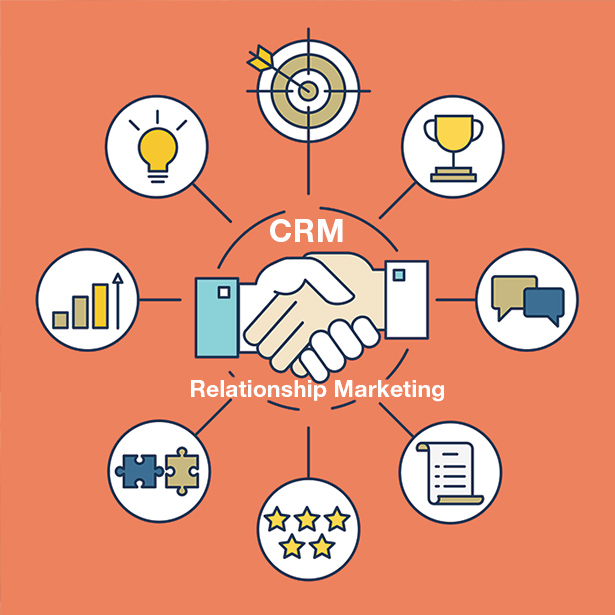The emergence of CRM as a management approach in the last decade is a result of some important trends. They include:
- Shift in business focus from transactional marketing to relationship marketing
- Treating clients as tangible assets for value creation leading to big revenue over the long run
- Emergence of market analysis as a key tool to proactively access information
- Greater utilization of technology in managing and maximizing the value of information
Relationship marketing
The focus has shifted to constant value creation for the clients to effectively retain them. Using the existing investment to develop products and services will lead to lower customer acquisition cost and high revenue. It also involves great intangible benefits. By interacting more with clients, one gets to know other requirements of clients, which is not possible in transactional marketing.
Viewing customers as business assets
One of the primary benefits of a CRM is that it identifies the most profitable customers who can be retained by building strong relationships. It is easier to sell to someone who has already bought something. One aspect any firm looks seeks is revenue stream that can be generated over a customer’s lifetime. If customers are viewed as business assets, then the company will focus on growing business opportunities even more.
Deploying IT to maximize the value of information
CRM requires substantial IT infrastructure investment that has to be justified by cost savings and profitability. Many organizations are turning to CRM, because, instead of focusing on internal inefficiencies like back-office processes related to manufacturing and finance, CRM focuses on improving external efficiencies like sales and marketing.
A CRM system has two major IT components:
1. Data repository that enables the organization to collect a complete set of information on customers
2. Applications that enable value-adding interactions with customers, often across different channels, in order to meet their needs.
By utilizing IT to listen to customers, firms can identify their requirements better and gain a better revenue share.
CRM helps manage contacts effectively
CRM helps manage each contact based on what their future value. It helps companies focus on vital clients and manage their relationships effectively to earn more. Lots of add-on features make managing these contacts easier and more effective. CRM can be seen as a business strategy coupled with the power of technology to smartly manage the complete customer life cycle.
Building stable and long-term relationships with key contacts and accounts is one of the primary objectives of the senior management. CRMM helps them achieve it by segregating accounts and contacts based on their current and future values. The key question, “What does each customer want,” is answered by CRM with the help of analytics and dashboards. The analysis forms a key ingredient on the approach that is taken for each individual client. In that sense, CRM is the bridge that fills the gap between key contacts and the management.



